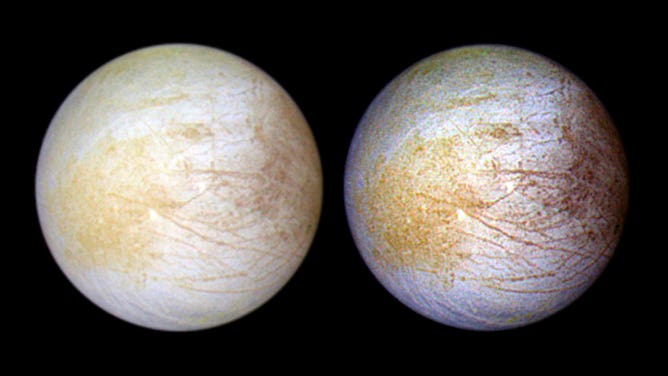Evidence of water vapor atmosphere found on one side of Europa
Discovery made during analysis of 16 years of Hubble telescope observations

This photograph of the Jovian moon Europa was taken in June 1997 at a range of 776,700 miles by NASA's Galileo spacecraft.
(NASA)
Scientists have found evidence of a water vapor atmosphere on one side of Europa – an icy moon orbiting Jupiter.
Water vapor was discovered on Europa several years ago in the form of 60-mile-high geysers that erupt from the icy surface. However, an analysis of 16-years-worth of observations made by NASA’s Hubble Space Telescope revealed evidence of the long-term presence of water vapor in the atmosphere of the trailing hemisphere of Europa.
The trailing hemisphere is a side of a moon that is always opposite the direction of its orbit.
Scientists used an analysis technique for this discovery that also found evidence of water vapor in another of Jupiter’s moons – Ganymede.
"The observation of water vapor on Ganymede, and on the trailing side of Europa, advances our understanding of the atmospheres of icy moons," said Lorenz Roth, of the KTH Royal Institute of Technology, Space and Plasma Physics, Sweden. "However, the detection of a stable water abundance on Europa is a bit more surprising than on Ganymede because Europa's surface temperatures are lower than Ganymede's."
Daytime temperatures on Europa’s frozen surface average minus 260 degrees Fahrenheit, but scientists believe there is a large ocean under the frozen surface that could support life.
Scientists think there are nearly 80 moons that orbit the gas giant Jupiter.